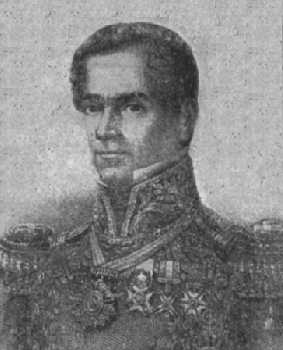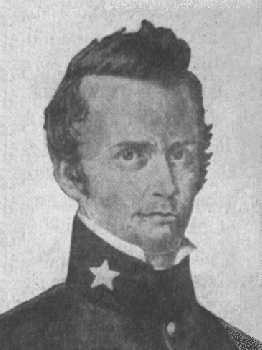
166 years later, Texas recalls the Goliad massacre
Posted on 03/24/2002 10:16:30 AM PST by MeekOneGOP

166 years later, Texas recalls the Goliad massacre
Historic battle helped gather support for cause against Mexico
03/24/2002
There likely isn't a Texan or an American who hasn't heard the famous cry, "Remember the Alamo!"
But what about Goliad?
It will be 166 years ago Wednesday that 342 Texians, most of whom had been surrendered by Col. James W. Fannin seven days earlier and held in the presidio at Goliad, were killed by Mexican soldiers.
The Goliad massacre came 21 days after the fall of the Alamo, amid Texas' fight for independence against Mexico. The Alamo had fallen to Mexican Gen. Antonio López de Santa Anna's army after a 13-day siege and all of its 180-plus defenders had been killed. Santa Anna had given orders to his commanders that all foreigners taken in arms against the Mexican government were to be executed.
The siege and final battle at the Alamo is better known, but the Goliad massacre is credited by many historians with generating support for the Texas cause both within Texas and in the United States.
After the fall of the Alamo on March 6, Col. Fannin, who had been ordered to evacuate La Bahía and retreat northeastward to Victoria on the other side of the Guadalupe River, hesitated and didn't leave until March 19. It was too late; the Texians got only about 10 miles before they were caught by Mexican cavalry in open prairie. After a skirmish, they surrendered the next day.
The prisoners were marched back to La Bahía, under the impression that they were to be treated as prisoners of war. There, they were crowded into the church, remembered one of them, Herman Ehrenberg, a young (probably about 19 or 20) Prussian, who had been with the Texian army when it drove Mexican troops out of San Antonio (then called Bexar) in December 1835. He had spent part of the winter in the Alamo, but left before the siege began and joined Col. Fannin's troops in Goliad. He was captured with the others while retreating and marched back to La Bahía.
"[We] were stuffed into the old church for the night," he wrote later in a first-person account of his experiences, The Fight for Freedom in Texas in the Year 1836. "Literally stuffed, as we stood so close man to man that it was possible at the most for only one-fourth to even sit down. ... Many slept while standing, as the bodies were pressed so close against one another, it made it impossible to fall over. ... The next morning finally appeared, but with it still no liberation from this deathly dungeon. Our breakfast, as before, consisted of water."
Staying loyal
Ehrenberg wrote that he refused an offer made to Prussian citizens to defect to the Mexican side. He also noted that on the morning of March 26, soldiers brought in another 100 prisoners, volunteers from New York who had been captured.
That was also the day that Col. José Nicolás de la Portilla, the officer left in command of La Bahía, received a direct order from Santa Anna to execute the prisoners. Col. Portilla's superior, Gen. José de Urrea, had appealed to Santa Anna for clemency for the prisoners, but that reportedly had only outraged the Mexican commander.
The next morning, March 27, Palm Sunday, the prisoners were divided into three columns and marched out of the presidio. Ehrenberg's column proceeded in silence on the road toward Victoria. Then, without notice, they were marched off the road toward the San Antonio River and ordered to halt.
"At that moment, we heard the muffled rolling of a musket volley in the distance," Ehrenberg wrote later. "We looked at each other and cast questioning glances, first at ourselves and then at the Mexicans. Then another command 'Kneel down!' rang out from the lips of the Mexican officers. Only a few of us understood Spanish and could not, or would not, obey the order.
'Everything was quiet'
"The Mexican soldiers, who stood only three steps away, leveled their muskets at our chests, and we found ourselves terribly surprised. We still considered it impossible to believe that they were going to shoot us.
"... Sounds of a second volley thundered over to us from another direction, accompanied by confused cries, probably from those who were not immediately killed. This shocked our comrades out of their stark astonishment, which had lasted around five or six seconds ...
"A terrible cracking sound ... and then everything was quiet. A thick smoke slowly rolled towards the San Antonio. The blood of my lieutenant was on my clothing. Around me my friends quivered. ... I did not see more. Deciding quickly, I jumped up and, concealed by the black smoke of the powder, rushed down along the hedge to the river.
'Nothing to risk'
"... Only the rushing of the water was my guide. Then suddenly a powerful saber smashed me over the head. Before me, the figure of a little Mexican lieutenant appeared out of the dense smoke, and a second blow from him fell on my left arm, with which I had tried to ward off or parry the blow.
"I had nothing to risk and everything to gain. Either life or death! ... The smoke rolled like a black thundercloud over to the other side, and I stood with rapidly pounding heart on the rocks at the edge of the water. As the water flowed at my feet, behind me the hangmen were pursuing.
"Like a corps from hell, they came after me, but ... I threw myself into the rescuing floods."
After the bloodshed
Most historians agree that 342 men were executed at Goliad and 28 escaped. About 20 more were spared because they were physicians, orderlies, interpreters or mechanics.
Ehrenberg was one of those who escaped. He wandered around South Texas for two weeks and finally, nearly starved, he arrived at Gen. Urrea's camp. Posing as a lost traveler, he became a guest of the Mexican army until news came from San Jacinto that Santa Anna had been defeated.
At that final battle, the Texian battle cry was "Remember the Alamo! Remember Goliad!"
After being discharged from the Texian army, Ehrenberg returned to Prussia, but later made his way back to America where he became known as an explorer, mapmaker and a '49er in the California gold rush.
Natalie Ornish is a Dallas-based free-lance writer. She is author of Ehrenberg: Goliad Survivor, Old West Explorer.
Also, great family-style restaurant right next to the battleship near the S. J. Monument. Fried chicken is the final serving, Mexican chicken, of course.
Thanks for the post. My 5th grade daughter was just learning about this last week.You're very welcomed..............

That's not true ---the Mexican government was newly independent from Spain and Texas was part of the nothern territory it obtained from Spain. Mexico couldn't convince Mexicans to move to Texas, it was having trouble controlling Indians and so invited the Anglos to move to Texas and help develop the territory. The Anglos and Hispanics of Texas got along well enough but the Mexican government was a big mess and so Texas broke free from it.
Thanks for the very nice post. My father's ancestors were given the area around Goliad and Gonzales by Stephen F. Austin. They had settled the area and had minor roles in the war for Texas independence. Of course, they had buffoons for grandchildren who gambled all but about 640 acres of it away in the 1880s -- otherwise I would be typing this e-mail from my pleasure palace in Monaco or Tahiti. For every ancestor to be proud of, there's at least another that you'd rather forget.My pleasure................


It belongs to White, Black, and Hispanic Americans but not foreign citizens from Mexico.
I'm a South Texan & everyone I know is aware of 'Remember Goliad!' Col. Fannin is legendary.I'll see if I can find a picture of your Colonel and post it if I do..........Just this morn there was a discussion on talk radio about Ron Howard coming to Goliad as part of his research for an upcoming movie on the Alamo. It would be nice to include the tragedy that occured at Goliad. Most folks never heard of this event...

Presidio La Bahia, Goliad, Texas. Chapel interior. Re-enactors
as Col. Fannin soldiers in Texas War with Mexico, Texas
Revolution, Goliad Massacre Re-enactment. Spanish Missions,
Texas.
http://photosourcefolio.com/1180/1180-06.jpg
James Walker Fannin was born in early 1804 in Georgia. He was adopted by his maternal grandfather, James W. Walker, and raised on a plantation near Marion. In 1819, he entered the U. S. military academy at West Point under the name of James F. Walker, and remained for just over two years.
Fannin came to Texas with his wife and two daughters in 1834, and settled at Valesco. Soon after his arrival, he became active in the cause for independence from Mexico. He was a participant in the Battle of Gonzales on October 2, 1835. Later the same month, he and James Bowie led the Texas forces in the battle of Concepcion.
In January of 1836, Fannin was appointed by the provisional government as an agent to raise troops and money for the republic. In command of a regiment at Goliad, he received orders from Sam Houston on March 14 to retreat to Victoria. Partly through indecision and partly due to other circumstances, Fannin delayed the retreat for five days. When he finally began the retreat, Mexican forces under General Jose Urrea had advanced to the vicinity of the town.
With his regiment of about 400 men, Fannin surrendered at the Battle of Coleto after being surrounded by the Mexican forces, and were taken back to Goliad. On order of Antonio Lopez de Santa Anna, he was executed along with virtually all of his men on 27 March 1836.
Return to Lone Star Junction Home Page
______________________________________________________________________
Copyright © 1995-96 Lone Star Junction

Menos de 200 soldados americanos en la fortaleza hecha frente concluído 2000 mejicanos.Si!...........huh? :O)
I just love being a Texan! Thanks for refreshing my memory of this part of our history.You bet! Me too.......

My Grandfather was a Lutheran missionary to Texas (from Germany) and Goliad was one of the towns where he lived and preached.
Disclaimer: Opinions posted on Free Republic are those of the individual posters and do not necessarily represent the opinion of Free Republic or its management. All materials posted herein are protected by copyright law and the exemption for fair use of copyrighted works.